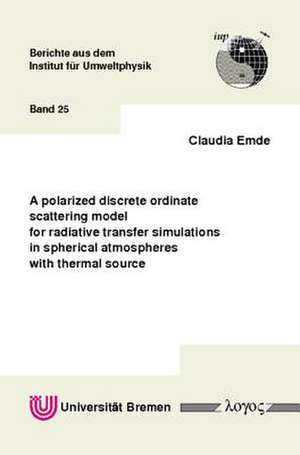A Polarized Discrete Ordinate Scattering Model for Radiative Transfer Simulations in Spherical Atmospheres with Thermal Source: Berichte Aus Dem Institut Fur Umweltphysik, cartea 25/2
en Limba Engleză Paperback
Preț: 441.77 lei
Nou
Puncte Express: 663
Preț estimativ în valută:
84.53€ • 88.26$ • 69.96£
84.53€ • 88.26$ • 69.96£
Indisponibil temporar
Doresc să fiu notificat când acest titlu va fi disponibil:
Se trimite...
Preluare comenzi: 021 569.72.76
Specificații
ISBN-13: 9783832508555
ISBN-10: 3832508554
Pagini: 204
Editura: Logos Verlag Berlin
Seria Berichte Aus Dem Institut Fur Umweltphysik
ISBN-10: 3832508554
Pagini: 204
Editura: Logos Verlag Berlin
Seria Berichte Aus Dem Institut Fur Umweltphysik
